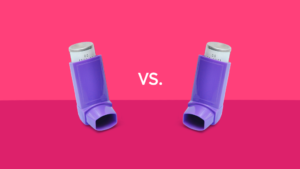Maximizing Weight Loss with Contrave: Naltrexone Dosage Guide
HOME |WEIGHT LOSS | CONTRAVE FOR WEIGHT LOSS: NALTREXONE DOSAGE GUIDE
Contrave, a combination medication containing bupropion and naltrexone, is increasingly used as a pharmaceutical intervention for weight loss. Bupropion acts as an appetite suppressant while naltrexone helps reduce cravings.
This article provides a comprehensive guide on maximizing weight loss with Contrave, specifically focusing on the dosage of naltrexone. We will explore recommended dosages, adjustments for individuals with specific medical conditions, potential interactions, safety precautions, and efficacy in clinical trials.
It is important to consult with a healthcare provider before considering Contrave as a weight loss option.
Key Takeaways
- Contrave is a combination drug that contains naltrexone and bupropion, used for weight loss and management.
- It works as an appetite suppressant and reduces cravings when used in conjunction with a reduced-calorie diet and exercise.
- Clinical trials have shown that people who took Contrave, along with following a reduced-calorie diet and increased physical activity, lost more weight compared to those who didn’t take the drug.
- Contrave can cause mild or serious side effects, including nausea, headache, dizziness, insomnia, increased blood pressure, seizures, and allergic reactions.
What is Contrave and How Does it Work for Weight Loss
Naltrexone is used for addiction treatment, while bupropion is an antidepressant that can reduce appetite.
Contrave suppresses appetite and cravings, making it effective for weight management.
It is important to consider the potential risks and side effects before starting Contrave treatment.
Understanding the Components: Naltrexone and Bupropion
Contrave is a combination medication that contains naltrexone and bupropion. These two active ingredients work together to assist with weight loss in overweight individuals with weight-related medical problems.
Naltrexone functions as an opioid antagonist, reducing cravings and controlling appetite. Bupropion, on the other hand, is an antidepressant that can also decrease appetite. When taken in combination, Contrave acts on different areas of the brain to help decrease appetite, control food intake, and support weight loss efforts.
It is important to follow the prescribed dosage instructions for Contrave, gradually increasing the dose over time. However, it is crucial to note that Contrave is not approved for other uses such as depression, smoking cessation, or alcohol abuse.
With an understanding of the components of Contrave, let’s now explore its effectiveness for weight management.
Effectiveness of Contrave for Weight Management
Contrave, a combination of naltrexone and bupropion, has been proven effective in promoting weight loss and managing weight. Clinical trials have shown that individuals who took Contrave, along with a reduced-calorie diet and increased physical activity, lost more weight compared to those who didn’t take the drug. After four weeks of use, participants experienced a 5% or greater reduction in body weight.
Contrave, when combined with lifestyle changes, may increase the chances of maintaining weight loss for up to four years. It is important to note that individual results may vary.
Let’s now discuss the potential risks and side effects of Contrave.
Potential Risks and Side Effects of Contrave
Contrave, a weight loss medication approved by the FDA, contains bupropion and naltrexone. It is used for chronic weight management in adults with a BMI of 30 or more (obese) or 27 or more (overweight) with weight-related medical conditions.
Common side effects of Contrave include nausea, constipation, headache, dizziness, and dry mouth. These side effects are usually temporary.
However, there are also serious side effects such as increased blood pressure, seizures, and liver problems. If serious side effects occur, individuals should stop taking Contrave and seek medical attention.
How to Take Contrave for Maximum Weight Loss
To maximize weight loss with Contrave, follow the recommended dosage and usage instructions. Start with one tablet in the morning and gradually increase to two tablets in the morning and two tablets in the evening.
Continue taking Contrave as prescribed for the recommended duration to effectively manage weight.
Starting Contrave: Dosage and Recommendations
The starting dosage of Contrave for maximum weight loss is typically a low dose that is gradually increased over time. The initial dose of Contrave contains 8 mg of naltrexone and 90 mg of bupropion.
To start Contrave, one tablet is taken in the morning, which is then increased to two tablets in the morning. Finally, two tablets are added in the evening to ensure even distribution of the medication throughout the day.
It is important to follow the prescribed dosing schedule and consult with a healthcare provider for personalized recommendations.
Managing Contrave Dosage for Optimal Results
Contrave dosage management is crucial for optimal weight loss results.
Contrave is a medication that contains naltrexone and bupropion.
Each Contrave tablet has 8 mg of naltrexone and 90 mg of bupropion.
The dosage is gradually increased over the first 4 weeks to minimize side effects.
Consult your doctor before making any changes to the prescribed dosage.
The recommended dosages vary based on individual factors such as medical history and concurrent medications.
Inform your doctor about your medical history and current medications for safe and effective use of Contrave.
Duration of Taking Contrave for Effective Weight Management
The duration of taking Contrave for effective weight management depends on individual weight loss goals and response to the medication.
Contrave can be used for long-term weight management in obese adults with a BMI of 30 kg/m2 or more or overweight adults with a BMI of 27 kg/m2 or more and weight-related conditions.
It is important to consult a healthcare provider to assess the risks and benefits of taking Contrave.
The dosing schedule involves gradually increasing the dosage from one tablet in the morning to two tablets in the morning and two tablets in the evening.
Monitoring for side effects, such as nausea, constipation, headache, and dizziness, is crucial. If severe or concerning side effects occur, medical attention should be sought.
Discussing the duration of taking Contrave with a healthcare provider is essential for effective weight management.
Contrave: Naltrexone Dosage and Timing
Understanding the optimal dosage of naltrexone is crucial for maximizing weight loss with Contrave. The dosage of naltrexone, an active ingredient in Contrave, can significantly impact weight loss outcomes.
Additionally, adjusting the timing of naltrexone intake may play a role in improving weight management.
Individualizing the Contrave dose based on needs and response can help achieve better weight loss results.
Optimal Naltrexone Dosage and its Impact on Weight Loss
Determining the optimal dosage of naltrexone is crucial for achieving desired weight loss results with Contrave. The recommended dosage of naltrexone in Contrave is 8 mg, combined with 90 mg of bupropion, and it is typically taken twice a day. Consistently taking Contrave at the prescribed times is important for significant weight loss.
Higher doses may be necessary for some individuals, but a healthcare professional should determine this to minimize side effects. Possible side effects of naltrexone include nausea, headache, and insomnia, but they are generally mild and temporary.
Contrave is an FDA-approved weight loss pill that can be effective when taken at the appropriate dosage and timing.
Timing of Naltrexone Intake for Improved Weight Management
The timing of naltrexone intake is important for improved weight management with Contrave. Contrave, a prescription weight loss medication, contains 8 mg of naltrexone and 90 mg of bupropion. It is recommended to take Contrave twice a day, with one tablet in the morning and one tablet in the evening. Consistency is key, so it should be taken at the same times each day to maintain a steady level of the medication in the body.
In clinical trials, the drug was used in combination with a reduced number of daily calories and increased exercise. This treatment combination was more effective in helping people lose and manage weight compared with diet and exercise alone.
Contrave can be taken with or without food, but it is advisable to avoid high-fat meals to minimize potential side effects. Along with taking Contrave, following a reduced-calorie diet is essential for chronic weight management in adults. Contrave has been proven safe and effective when used in combination with diet and exercise.
Adjusting Contrave Dose for Better Weight Loss Results
To achieve optimal weight loss results with Contrave, adjusting the dosage of naltrexone is crucial. Contrave is an FDA-approved weight loss pill that combines naltrexone and bupropion. Here are three important factors to consider when adjusting the Contrave dose for better weight loss results:
Consult with a healthcare professional:
Work closely with your healthcare provider to determine the appropriate naltrexone dosage based on your weight loss goals and individual needs.Gradual dose increase:
Contrave dosage typically starts with one tablet in the morning and gradually increases to two tablets in the morning and two tablets in the evening. Your healthcare provider may adjust the dose based on your response and any potential side effects.Monitoring for clinically significant weight loss:
Regularly monitor your weight loss progress to evaluate the effectiveness of Contrave. If you are not experiencing clinically significant weight loss, your healthcare provider may consider adjusting the dose or exploring other options.
Common Contrave Side Effects and How to Manage Them
Contrave has common side effects that can be managed effectively.
Knowing how to handle these side effects is important.
Seek medical assistance if the side effects become severe or persistent.
Common Side Effects of Contrave
Contrave’s common side effects can be effectively managed with guidance from healthcare professionals. Here’s how to manage them:
Nausea: Taking Contrave with food can reduce nausea. If it persists, healthcare providers may recommend an antacid or anti-nausea medication.
Headache: Over-the-counter pain relievers like ibuprofen or acetaminophen can alleviate headaches. Consult a healthcare provider if the headache persists or worsens.
Insomnia: Taking Contrave in the morning can minimize sleep disturbances. Adjusting the dosage or adding a sleep aid may be recommended if insomnia persists.
By following healthcare professionals’ guidance, these side effects can be effectively managed during your weight loss journey with Contrave.
Strategies to minimize and handle Contrave’s side effects will be discussed in the next section.
Strategies to Minimize and Handle Side Effects of Contrave
Strategies to Minimize and Handle Side Effects of Contrave:
- Nausea: Take Contrave with food.
- Headache: Stay hydrated and rest.
- Dizziness: Get up slowly from sitting or lying.
- Insomnia: Take Contrave in the morning.
- Dry mouth: Stay hydrated and chew sugar-free gum.
By following these strategies and being mindful of any unusual or severe side effects, individuals can enhance their weight loss journey while ensuring the safety and effectiveness of Contrave.
It is important to consult with a healthcare provider if any concerns or questions arise.
When to Seek Medical Assistance for Contrave Side Effects
Understanding when to seek medical assistance for Contrave side effects is crucial. Here are some guidelines to help you identify when it is necessary to consult a healthcare professional:
Seek medical assistance if you experience severe or uncontrolled side effects such as increased blood pressure, seizures, or allergic reactions.
Consult a healthcare professional if you notice any unusual changes in mood or behavior, as Contrave has a boxed warning for the risk of suicidal thoughts and behaviors.
Seek medical assistance if you develop liver problems, including hepatitis, which have been reported with naltrexone.
Promptly seeking medical assistance for these side effects while taking Contrave is essential. By doing so, you can receive the appropriate guidance and support to manage these symptoms effectively.
In the following section, we will discuss guidelines for using Contrave for chronic weight management.
Guidelines for Using Contrave for Chronic Weight Management
Contrave is a prescription drug used for long-term weight management in obese or overweight adults with weight-related medical conditions.
Before starting Contrave, it is important to consult a healthcare provider to assess the potential benefits and risks associated with its use.
Contrave as a Prescription Drug for Chronic Weight Management
Contrave is prescribed for chronic weight management in adults with obesity or weight-related medical conditions. It helps adults lose weight and maintain it over time by reducing cravings and appetite. Contrave contains naltrexone, an opioid antagonist. It is taken twice a day as directed by a healthcare professional.
Setting realistic weight loss goals and monitoring progress is important. If significant weight loss is not achieved after 16 weeks, Contrave should be discontinued. These guidelines can maximize weight loss efforts with Contrave.
Considerations for Long-Term Use of Contrave
Regular monitoring and support are crucial for the long-term use of Contrave in chronic weight management.
Contrave is a combination of bupropion and naltrexone specifically for weight loss.
It should only be used as directed and under the supervision of a healthcare professional.
Patients should also adhere to a healthy diet and report any side effects to the FDA.
It is important to note that Contrave can increase blood pressure and should not be used if you have uncontrolled seizures.
Successful long-term use of Contrave in chronic weight management requires regular monitoring and support.
Benefits and Risks of Using Contrave for Chronic Weight Management
Contrave’s effectiveness for long-term weight management: Clinical trials have demonstrated that individuals who followed a reduced-calorie diet and engaged in increased physical activity while taking Contrave experienced greater weight loss compared to those who did not take the medication. This suggests that Contrave can be a valuable tool for managing weight over an extended period.
Weight maintenance after discontinuing Contrave: It is important to note that weight loss achieved while using Contrave may not be sustained once the medication is stopped. This highlights the importance of maintaining lifestyle changes even after discontinuing Contrave in order to sustain weight loss.
Safety considerations for Contrave usage: Certain precautions should be taken when using Contrave. If any adverse effects occur or if there are concerns about the medication, it is advisable to discontinue its use and consult a healthcare professional. Additionally, if pregnancy occurs while using Contrave, it is important to inform a healthcare provider promptly, as the safety of naltrexone hydrochloride and bupropion hydrochloride during pregnancy is not well-established.
Frequently Asked Questions
What Are the Potential Risks and Benefits of Combining Contrave With Other Weight-Loss Medications?
Combining Contrave with other weight-loss medications should only be done under the guidance of a doctor. Safety and efficacy of this combination have not been studied, so it is important to assess the potential risks and benefits.
Can Contrave Be Used for Long-Term Weight Management in Individuals With a BMI Below 27 Kg/M2?
Contrave is approved for long-term weight management in individuals with a BMI of 30 kg/m2 or more (obese) or 27 kg/m2 or more (overweight) with weight-related conditions. Consult a healthcare provider for personalized recommendations.
Are There Any Specific Medical Conditions That May Require Dose Adjustments or Precautions When Taking Contrave?
Specific medical conditions may require dose adjustments or precautions when taking Contrave. It is important to consult a healthcare provider to assess potential risks and benefits based on individual circumstances.
How Does Contrave Affect Individuals With Type 2 Diabetes and Their Blood Sugar Levels?
Contrave may increase the risk of low blood sugar in individuals with Type 2 diabetes who are using it for weight loss. Consult a healthcare provider to assess potential risks and benefits.
What Other Medications or Substances Should Be Avoided While Taking Contrave?
When taking Contrave, it is important to avoid opioids, MAO inhibitors, and other forms of bupropion. Consult a healthcare provider for a comprehensive list of interactions and potential risks.



